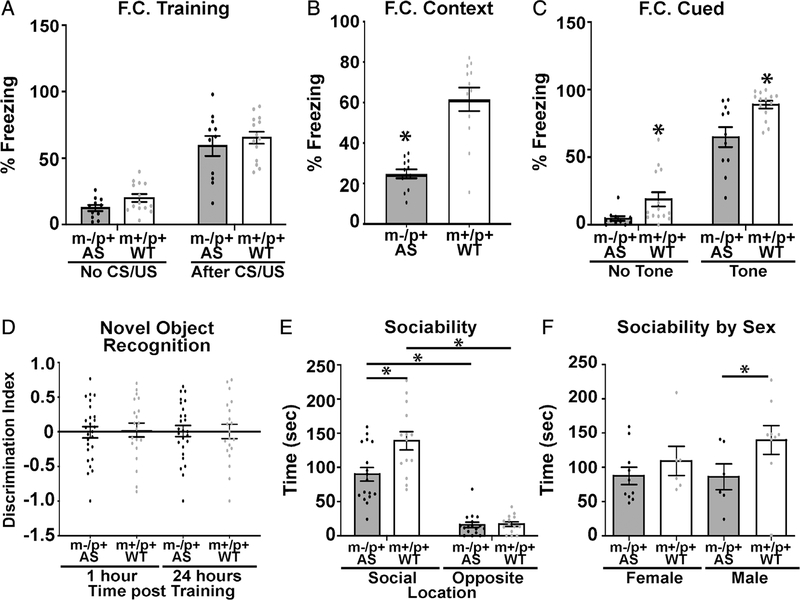Figure 5.
AS rats display deficits in hippocampal-dependent learning and memory. (A) AS rats showed no significant difference in percent freezing during fear conditioning training (AS n = 11 (5M, 6F), WT n = 14 (7M, 7F); F(1,23) = 0.0165, P > 0.05). (B) AS rats show a significant deficit in percent of time freezing 72 hr post-training during context testing (t(23) = 5.054, P < 0.0002. (C) AS rats displayed a deficit in cued fear conditioning 72 hr post-training (F(1,23) = 263, P < 0.002). (D) Novel object recognition showed no significant differences in discrimination index with wild type controls (AS n = 19 (10M, 9F), WT n = 15 (7M, 8F)) (F(3,88) = 0.03, P > 0.05). (E) All animals exhibited preference for the novel rat compared to the opposite, empty cage, but AS rats showed reduced interaction with the novel target rat compared to WT rats (AS n = 16 (6M, 10F), WT n = 15 (9M, 6F)) (F(1,29) = 12.53, P < 0.002). (F) This reduction in interaction was predominantly due to the male AS rats (AS n = 16 (6M, 10F), WT n = 15 (9M, 6F)) (t(12) = 3.186, P < 0.008). All outliers that were excluded from analysis (greater than 2 standard deviations from mean) are indicated by a square rather than a circle.

